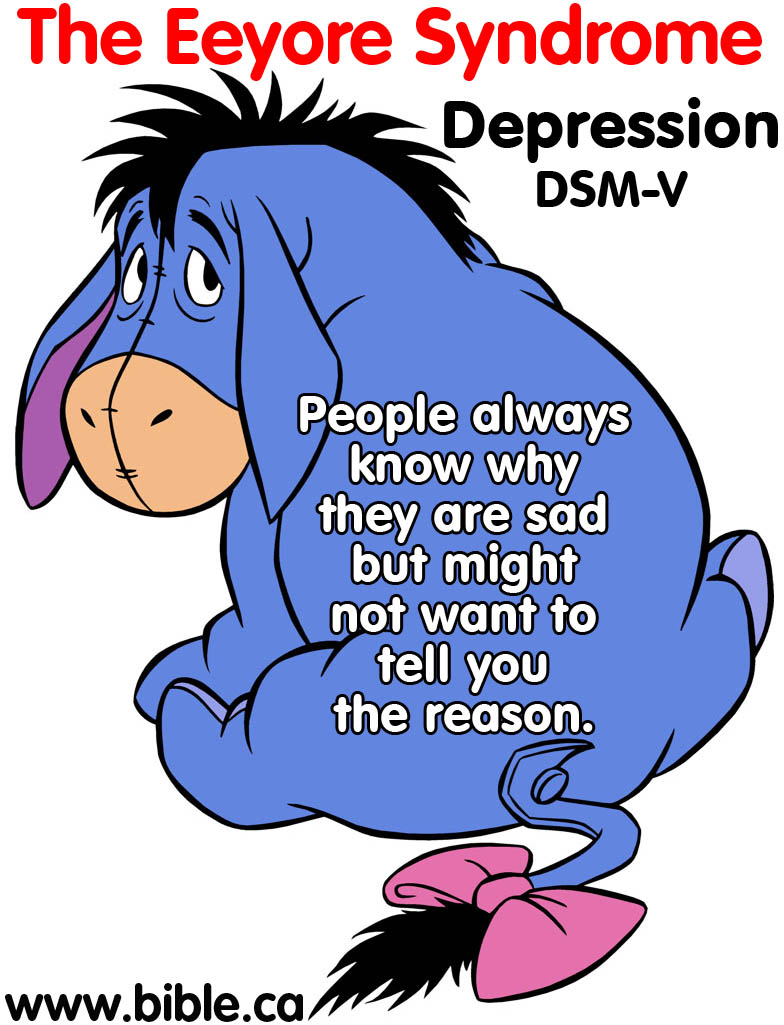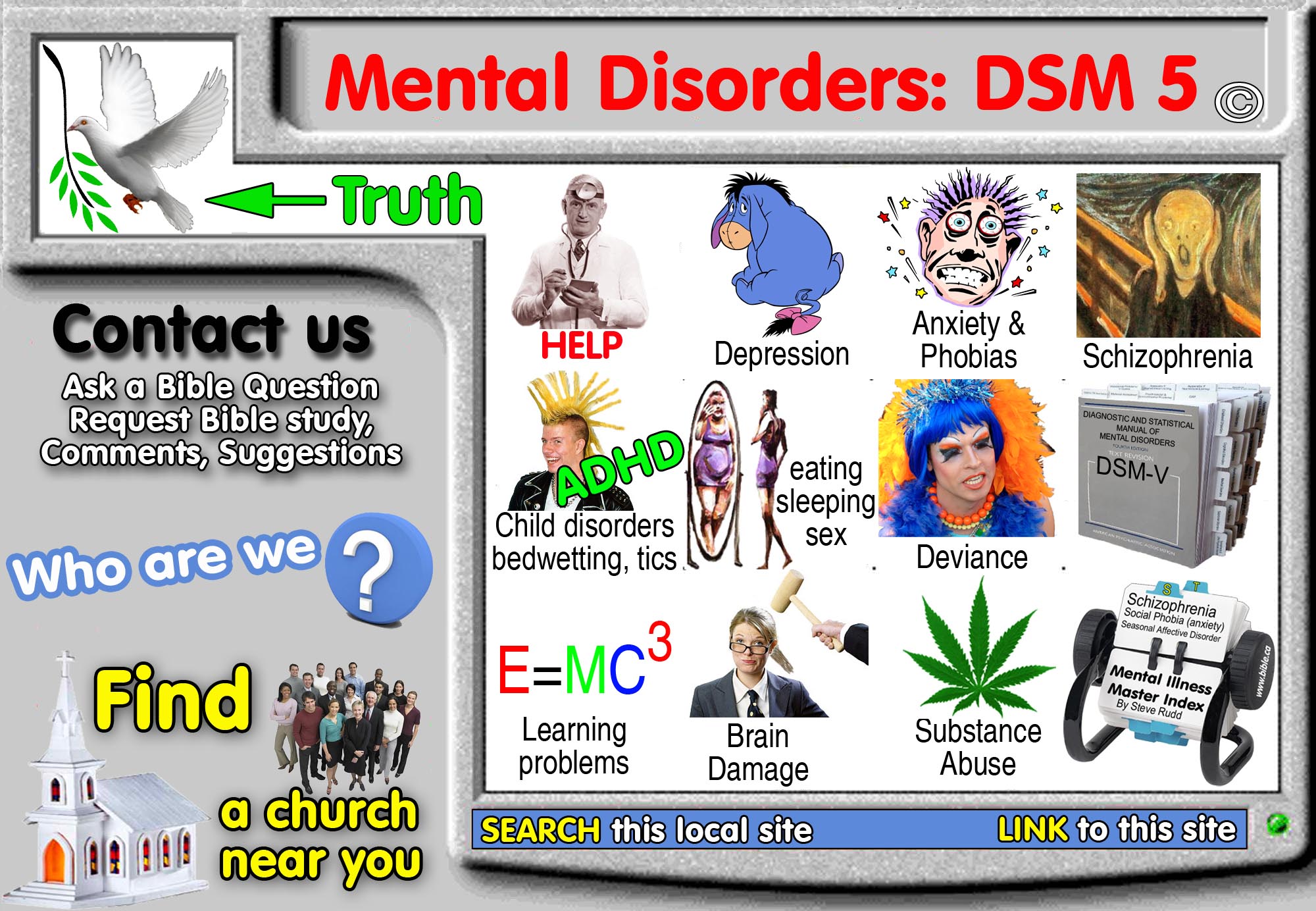The case of "Sunshine" (Depression: Seasonal Affective Disorder: SAD, Winter Blues)
Casebook of Biblical Psychiatry © Version 7
|
Based upon |
Casebook of Biblical Psychiatry© brings the principles of Biblical Psychiatry to life based upon real-world cases and familiarizes Christians with different types of situations. This practical companion volume to Biblical Psychiatry© includes not only diagnosis, but also in-depth discussions by experienced Christians for Biblical approaches to treatment. This meticulously detailed volume of dynamic real-life case studies is simply a "must read" for all clinical Psychiatrists, mental health care professionals and Christians interested in expert opinion on today's treatment approaches. Psychiatric students, educators, and practitioners—as well as social workers, nurses, medical physicians, and interested laypersons—will find this unique volume of inestimable value in their day-to-day work.
|
|
|
|
||||
|
The case of "Sunshine" (Depression: Seasonal Affective Disorder: SAD) |
|
|||||
|
|
||||||
|
|
The case of "Sunshine" See
also: "the myth of |
|
||||
|
|
Biopsychiatric labels DSM-5 |
Depression, Seasonal Affective Disorder (SAD), Winter Blues |
||||
|
|
Checklist Behaviours DSM-7 |
High self-esteem, Depression, lack of acceptance of life situation |
||||
|
|
Insights MMPI-7 |
|
||||
|
|
Quick Pick EDS-7.1 |
I feel unhappy that my family cannot get along at Christmas |
||||
|
|
Self-disablement EDS-7.2 |
- |
||||
|
|
Chemical imbalance EDS-7.3 |
Yes. She ingested psychiatrist prescribed drugs for six months. This indicates she might have brain damage but Tardive Dyskinesia is unlikely |
||||
|
|
Benefits EDS-7.4 |
Escape duty or life situation: EDS-7.4.4 Attention seeking, Pride, Praise, Honour, Fame: EDS-7.4.3 Control over others: EDS-7.4.6 Revenge: EDS-7.4.8 Victimhood: EDS-7.4.13 |
||||
|
|
Monetary EDS-7.5 |
- |
||||
|
|
Annoyance Scale EDS-7.6 |
Low |
||||
|
|
Diagnostic Laws EDS-7.7 |
Law of Narcissistic Behaviour Choice (NBC) EDS-7.7.1.NBC Law of Pediatric Multifarious Obfuscation (PMO) EDS-7.7.12.PMO |
||||
|
|
Determine the Problem |
Needs to accept her family is dysfunctional and find happiness outside the family unit. |
||||
|
|
Ask a Child |
Something is must really be bothering her if it’s a beautiful sunny day and she is still sad. EDS-7.7.12.PMO |
||||
|
|
5 years later EDS-7.7.LPT |
Accepted her life situation, became independent, found happiness outside her family. |
||||
|
|
|
|||||
The case of "Sunshine"
Shannon was a Christian who found she got depressed whenever winter started to set in. Her doctor noticed this pattern and diagnosed her with a type of depression called, "Seasonal Affective Disorder" (SAD). He prescribed psychiatric drugs for her depression. He told her that the change in photo period was causing changes in her brain chemistry and suggested buying a sunshine therapy light and sit under it for an hour a day. She did not like the effect the drugs had on her overall ability to function and she described feeling like a zombie.
A Christian named James drove her home from church one day and asked her about her SAD. He began by asking if she really believed the photo period of the sun really changed caused her depression in a deliberate tone of incredulous disbelief. She said no. James then said that all depression is caused by the same thing: you are sad about something. James next asked, "what are you sad about?" She immediately said that it greatly bothered her that her family did not get along at Christmas, but instead it was always a war of strife which she hated. James asked the critical question: "Shannon, did your doctor ever ask you what you were sad about or try to counsel you?" She replied, "No. He just said I had SAD and wrote me a prescription. The whole process took less than 5 minutes". James drew her attention that when she was with Christians that she was happy, positive and smiling. She agreed.
Discussion:
"Seasonal Affective Disorder" (SAD) ranks among the best examples of pure junk science. Studies are conducted to chart latitude and the frequency of seasonal depression. So the theory goes, the farther north you live, the greater the percentage of the population that have SAD. Eskimo/Inuit, Iceland, Greenland populations have been studied and found to have a higher rate of SAD then those living at the equator, etc. The problem is that such studies are entirely subjective and worthless and are about as scientific as the study that found one in four people on earth have a "mental disease".
Then there are studies like this that show the opposite of SAD: Depression peaks in Greenland in mid-summer when the sun never sets:
Swedish researchers Karin Sparring Björkstén from the Karolinska Institutet, Sweden, conducted a longitudinal study on suicide in relation to seasons in Greenland (1968-2002 AD) and said, "In terms of seasonal light variation, Greenland is the most extreme human habitat. Greenland also has one of the highest suicide rates in the world. We found that suicides were almost exclusively violent and increased during periods of constant day. In the north of the country, 82% of the suicides occurred during the daylight months (including astronomical twilight)" … "Light is just one of many factors in the complex tragedy of suicide, but this study shows that there is a possible relationship between the two." (Accentuation of suicides but not homicides with rising latitudes of Greenland in the sunny months, Karin S Björkstén, Daniel F Kripke and Peter Bjerregaard, BMC Psychiatry, 2009)
So one "study" concludes lack of sunlight in Sweden causes depression and another concludes too much sunlight causes depression. The obvious stupidity of this junk science should be readily obvious to any-one with an IQ above a toaster.
Now there is science behind photo period triggering changes in plants and animals. Leaves fall, birds migrate and Showshoe Hares change the colour of their fur based on a ridged, involuntary and always predictable calendar timetable. Nothing like this is observed in the "winter blues" disease.
So why would someone make themselves sad with the approach of winter?
- SAD affects 80% women probably for the same reason they make their men keep the windows rolled up in the car and the heat cranked up in the house, while they sit around wrapped up in blankets watching reruns of the Bachelor. Women generally hate cold more than men. They are also more fashion conscious than men and high heels don't work well in slush.
- Canadians generally vacation in Florida in the winter to escape unpleasant weather. The tourist industry in Canada is not driven by huge numbers of Floridian's vacationing in Canada in the winter months.
- If you lived in the far north you would not anticipate with gladness the approaching 3 month period of darkness.
- Inuit do not throw a festival in anticipation of the 3 miserable, cold winter months of darkness. Who would look forward for having to crawl into a cold igloo for three long dark months? The effect of lack of sunlight on brain chemistry is junk science.
A photo therapy light? How utterly ridiculous! The notion of curing "Winter blues" with a light bulb smacks of Mesmer's historic magnetic and hypnotic cures for insanity, the Qray energizing bracelet and the "Shakti Helmet". I mean really. Step back and think about this. The placebo and nocebo effects are working in full force here.
As we see in our case of Shannon, she should sue the psychiatrist for mal-practice (prescribing her drugs to correct her family member's misbehaviour) and incompetence for not asking her if she was sad about something.
Benefits from behaviour: This illustrates the Law of Narcissistic Behaviour Choice (NBC) EDS-7.7.1.NBC
- Escape life situation:
- Attention seeking:
- Revenge/control:
Benefits from behaviour: This illustrates the Law of Narcissistic Behaviour Choice (NBC) EDS-7.7.1.NBC
- Escape duty or life situation: EDS-7.4.4. Shannon was sad for a reason and her sadness provided an escape from her unhappy family situation.
- Attention seeking, Pride, Praise, Honour, Fame: EDS-7.4.3. Shannon's sadness was an outward signal of silent communication that she was unhappy with the family strife. She knew exactly why she was depressed and rather quickly confessed why, when James asked. This same candidness would have duplicated itself, had any one of her family members also asked why she was depressed. She would have gladly told them.
- Control over others: EDS-7.4.6. By making herself out to be sick, she could escape submission and gain control.
- Revenge: EDS-7.4.8. Her depression was a way of saying to her family: See what you are doing to me! Get along.
- Victimhood: EDS-7.4.13. She was directly associating her "mental illness" with the family's inability to be at peace. In this way, she was making herself out to be a victim with a clear cause and effect (SAD).
Diagnostic laws that are seen illustrated in the case of "Sunshine":
- Shannon knew exactly why she was sad when the doctor diagnosed her with a chemical imbalance in her brain caused by a lack of sunlight and prescribed drugs to correct the chemical imbalance, but he never asked. This is classic biopsychiatry in action! This is why she tried the drugs, but quickly discontinued their use. Here is a guy with 11 years of university education telling to take drugs, and sitting under a light bulb for an hour a day her to make her feel better about family strife. She had already diagnosed the doctor with a delusional disorder, in regard to his diagnosis of her having SAD. This illustrates the Law of Diagnostic Anosognosia Relativism (DAR) EDS-7.7.7.DAR
- If ever there was a case of taking something simple and creating complicated epicycles to explain it, Biopsychiatric SAD theory is it! Someone is sad because her other people are dysfunctional and she, not they are told to take drugs and sit under a light bulb because the photo period has affected her brain chemistry. A child sees behaviour for what it is without inventing bizarre etiologies like the photo period altering brain chemistry. This illustrates the Law of Pediatric Multifarious Obfuscation (PMO) EDS-7.7.12.PMO
All behaviour is a choice. Depression is a choice and if you ask you will discover the reason. Of course, to Shannon's credit, she did not lie to James when he asked why she was sad, as others often do at first. The common, "I don't know why I am sad" is always a lie. People always know why they have chosen to mope around like Eeyore. However, all depressions are caused by high self-esteem because the person thinks they are better than, or do not deserve their current life situation. Being content in whatever circumstance is in important virtue Christians are to exhibit. Depression is a sinful behaviour choice in light of the fact the Bible commands us to rejoice in our hope of heaven in spite of earthly persecution, trials and tribulation. This kind of thinking will always be rejected by biopsychiatry, but then they are atheists who hate the Bible and base their life values on Darwinism. The harm non-Christians endure at the hand of chemical psychiatrists is the price they pay for rejecting the Bible as their behaviour manual.
|
Seasonal Affective Disorder Debunked See
the Case of Eeyore:
|
Note: Although these are based upon real case stories, the names and details have been changed to hide the identities of the people. This practice follows the standards of medical case history publication.
By Steve Rudd: Contact the author for comments, input or corrections.
Send us your story about your experience with modern Psychiatry



